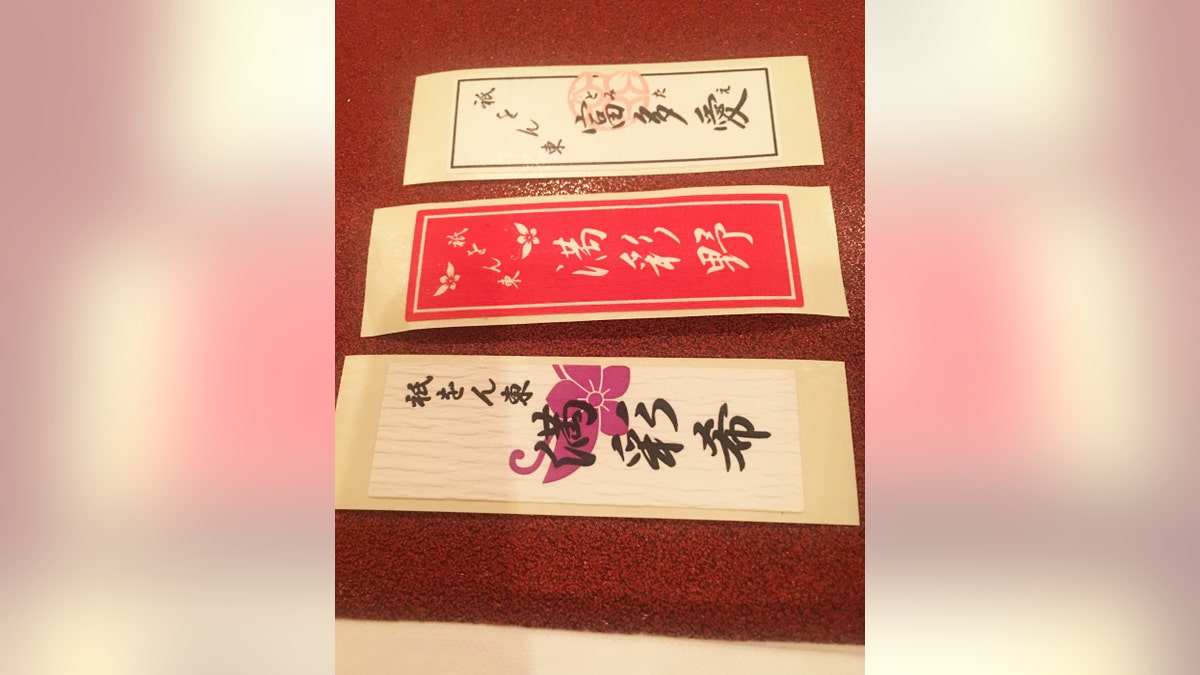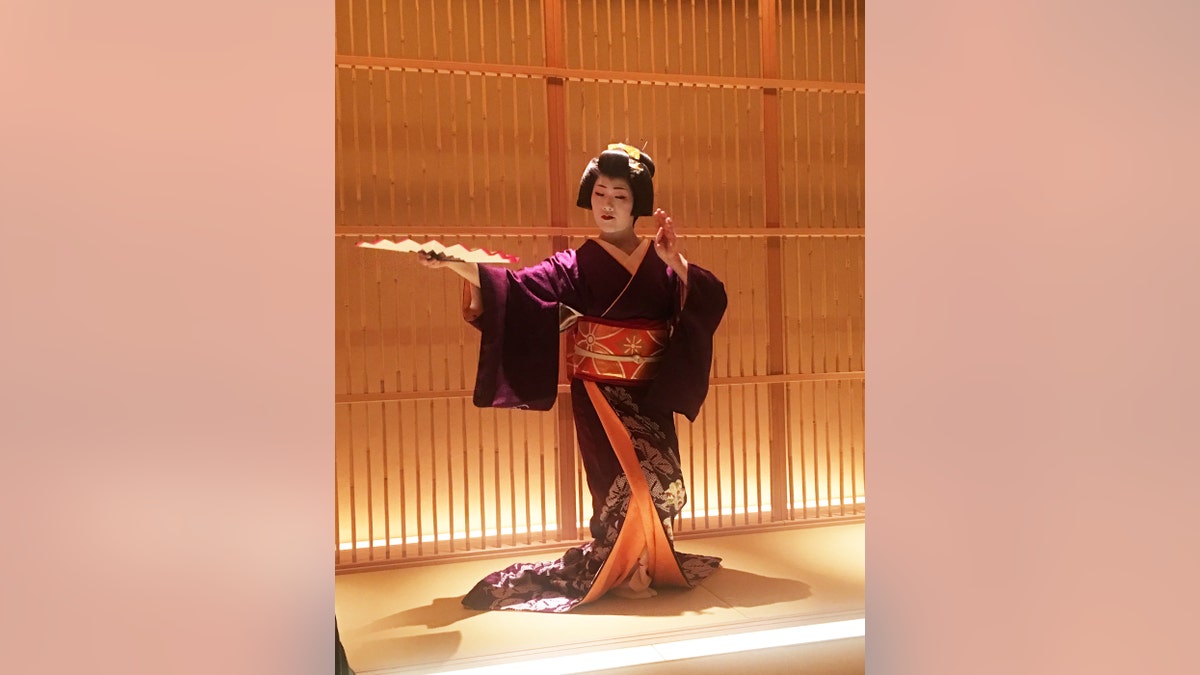
(Courtesy Four Seasons Kyoto)
Westerners think they know all about geishas, those delicate Japanese women with their virgin milky white faces accented by a jarring pop of red lipstick, their feet sitting in clacking wooden sandals and their bodies wrapped in kimonos that cost more than a Lexus.
But there's a lot they truly don't know— that the mystery of the geishas remains as alluring and complex today as when they came into existence 400 years ago to serve tea to the monks in Japan’s former capital, Kyoto.

Alex Porteous, General Manager of the Four Seasons Kyoto, takes a selfie with the working geishas.
Properly known as “geisya” or “geiko,” according to the Japanese National Tourism Organization, there are approximately 273 geishas and their apprentices, known as "meikko," remaining in Kyoto’s Gion District. Tourists visiting the district may feel as if they’ve traveled through time, back to the Edo period (1603-1868), when foreigners were barred from traveling to Japan.
But it is in Gion that visitors can embrace the gentility and hospitality of the geishas, which is a far cry from the sordid image Westerners had of them during and after World War II.
What is ‘geisha’?
Ask a geisha or meikko “What are you? What do you do?” and you’ll get no answer. It’s like asking why they’re human. Being a geisha satisfies an intrinsically natural desire, an unquestionable way of life.

Modern geishas use their own version of business cards. (Sery Kim)
“When I was a child of 12,” said a 16-year-old meikko sitting gracefully next to me at Hiroshiama, a tea house in Gion, “I saw a geisha, and I knew this is what I wanted to be.”
“What about seeing a geisha made you want to be one?” I asked in English. I spoke gently, imagining that a sudden motion or change in inflection would make her flee. The young meikko sat absolutely still as she contemplated my question, which was translated to her.
“I saw beauty,” she finally said. Then she moved to pour me some tea.
Training to be a geisha
A meikko’s apprenticeship typically runs four years. “Do you get to go home often?” I asked the girl at Hiroshiama tea house. “No,” she said resolutely, “I have not been home since I came here.”
While nothing prevents meikkos from going home to see their families, their determination and devotion to becoming a geisha — up to 18 hours a day — keeps them away. You could see on my meikko’s face how exhausting her training was, and she’d been at it for only six months. She had 3½ years to go.
“Meikko may look a glamorous work because they can wear very precious beautiful kimonos, have the opportunity to communicate celebrities and are asked for photo-shoot by passersby while they are just walking outside,” said Ishihatsu, the owner of the tea house.
“Those who look at only this side of the job would suffer from the gap between the good aspect and the reality, and not be able to continue as meikko. The reality means that they live in a community with rigid hierarchical relations. Discipline is indispensable, and they need to commit themselves to traditional arts seriously and improve their skills every day.”
The art of geisha/meikko entertainment
During the course of an evening, a geisha or meikko engages in skillful conversation before transitioning to play a three-stringed instrument called a shamisen. “The level of these instruments (the shamisen, which resembles a three-string banjo, and the fue, which is a transverse flute) is the key to whether a geisha is invited to a banquet often or not,” said Tanefumi, a geisha at the Ishihatsu tea house.
“Generally speaking, the older a geisha becomes, the higher level or performance of traditional arts customers expect.”
At Hiroshiama, during an approximately eight-course dinner, geishas and meikkos entertained me and my American companions with conversation before they turned to playing and dancing. We gawked as they floated from person to person, rising and sitting with no awkwardness.
As the evening progressed from conversation to music and then to dance and card playing, my questions became more intimate, covering everything from marriage (“No”) to having children (also “No”). But these answers aren’t universal. “Maikkos and geishas can get married,” Tanefumi said, “but when we do, we have to retire from their jobs. It’s totally up to each geisha about having a child. I personally hope to have a child in the future.”

A geisha performs a traditional dance. (Sery Kim)
The same applies to a geisha’s freedom. It costs upwards of $500,000 to train a meikko for four years. This ties the woman to her job for years, if not decades, but it doesn’t have to be forever. Nor is it without salary.
“A meikko and geisha get allowance in addition to expenditure on clothing, meals, lodging and so on,” Tanefumi said. “I will become self-employed quite soon. Self-employed geishas get no financial support from the house but become under less restriction and can make her own choice in many respects.”
I was surprised to discover that meikko feel empowered to leave, to get married and to have children. During my time with them, I felt they were somehow trapped by their lives. After all, in 2017, why not be a doctor or a lawyer or own a spa or do anything except entertain (mostly) men?
The answer was even more surprising: Feminism.
For the modern geisha or meikko, this career choice is the ultimate of feminism. They chose this life for themselves. The young meikko at Hiroshiama tea house had unlimited life choices, but she saw beauty in being a geisha. That was what she wanted, and that is what she will be.
